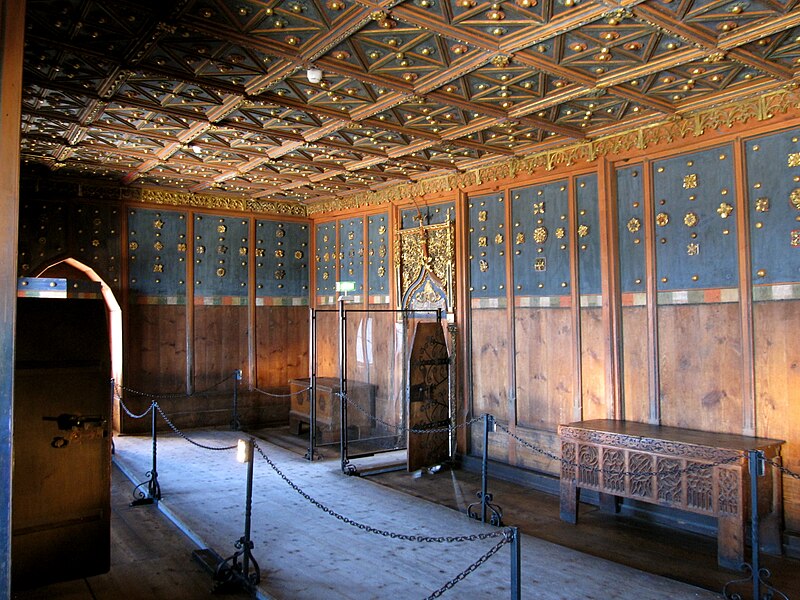
Painting by John Constable, of course. (Not that you can see any actual hay, but then that's probably because this isn't actually a hay wain at all, but is probably a wood wain or farm cart. A hay wain would need higher sides to stop the hay falling off.)
and wainscot is wooden panelling on the interior walls of a house:

Hohensaltzburg Castle, photo by Gryffindor
so what does a cordwainer do?
Now if you think these analogies are going to turn out to be a load of old cobblers, then you are quite right - though you are possibly wrong about cobblers.
A cordwainer is a shoemaker, or a worker in the sort of very fine leather for which Cordóba is famous; a cobbler, originally, tended to mend (not necessarily make) shoes.
I don't know why that piece of information is so vastly satisfying: but it is, isn't it.
Word To Use Today: the word wain comes from the Old English wægn; wainscot comes from the Middle Low German wagenschot, perhaps from wagen, wagon + schot, planking, related to the German Scheit, piece of wood. Cordwainer is what's left of the word Cordóba once the English had stopped mangling it.
No comments:
Post a Comment
All comments are very welcome, but please make them suitable for The Word Den's family audience.